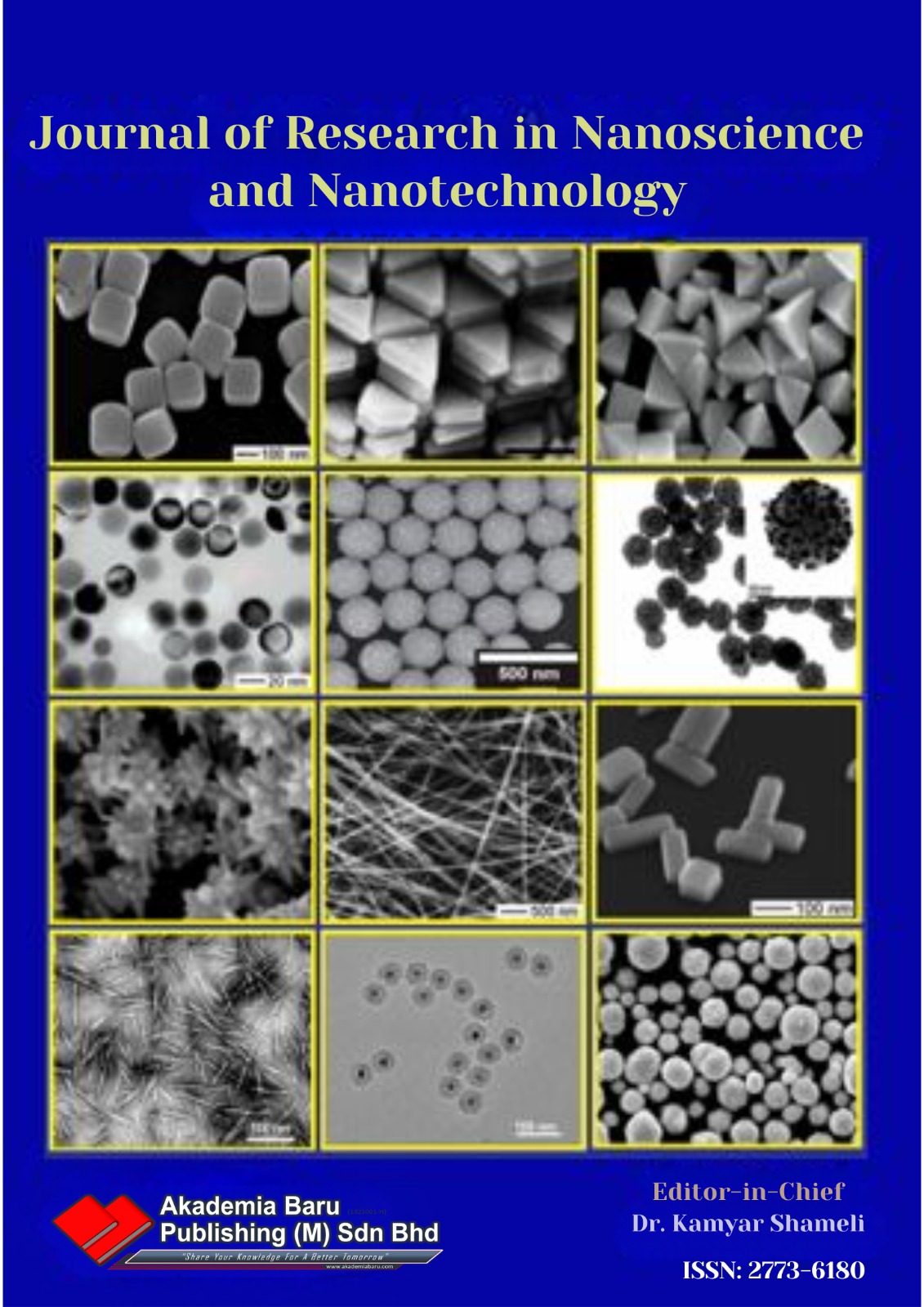Green Synthesis of Titanium Dioxide Nanoparticles using Extraction of Psidium Guajava for Smart Packaging Application
DOI:
https://doi.org/10.37934/jrnn.11.1.1623Keywords:
Green Synthesis, Titanium Dioxide Nanoparticles, Psidium Guajava, Smart PackagingAbstract
This research aims to investigate the application of smart packaging in exhibited antimicrobial activity against bacteria such as E. coli and S. aureus. An alternative of non-degradable plastic based on the green synthesis of titanium dioxide nanoparticles (TiO2 NPs) and biofilm of Chitosan-TiO2 NPs has been developed. TiO2 NPs are known to be effective antimicrobial agents synthesized from Psidium Guajava leaves. Chitosan is a natural carbohydrate polymer employed in smart biofilm for packaging for a long time due to its biodegradability, biocompatibility, and low toxicity. Chitosan-Titanium dioxide Biofilm underwent characterization study through XRD, FTIR and FESEM. The analysis has shown the spectra minima at 380 nm from UV- vis analysis represents TiO2 bands, the small size of titanium dioxide nanoparticle at 5-10 nm obtained from FESEM analysis, the crystallographic nature is "plane of TiO2 anatase" through XRD analysis, and the main functional group involved are carboxylic group O–H and Ti-O-Ti from FTIR analysis. The titanium dioxide nanoparticle was incorporated into chitosan, and the effectiveness of antimicrobial properties of the incorporated packaging was studied and recorded by observing the inhabitant zone. Consequently, TiO2-Chitosan efficiently suppresses the growth of bacterial colonies. The study only considers the antimicrobial packaging used, which will be disposed of generally for biodegradable packaging.
Downloads















